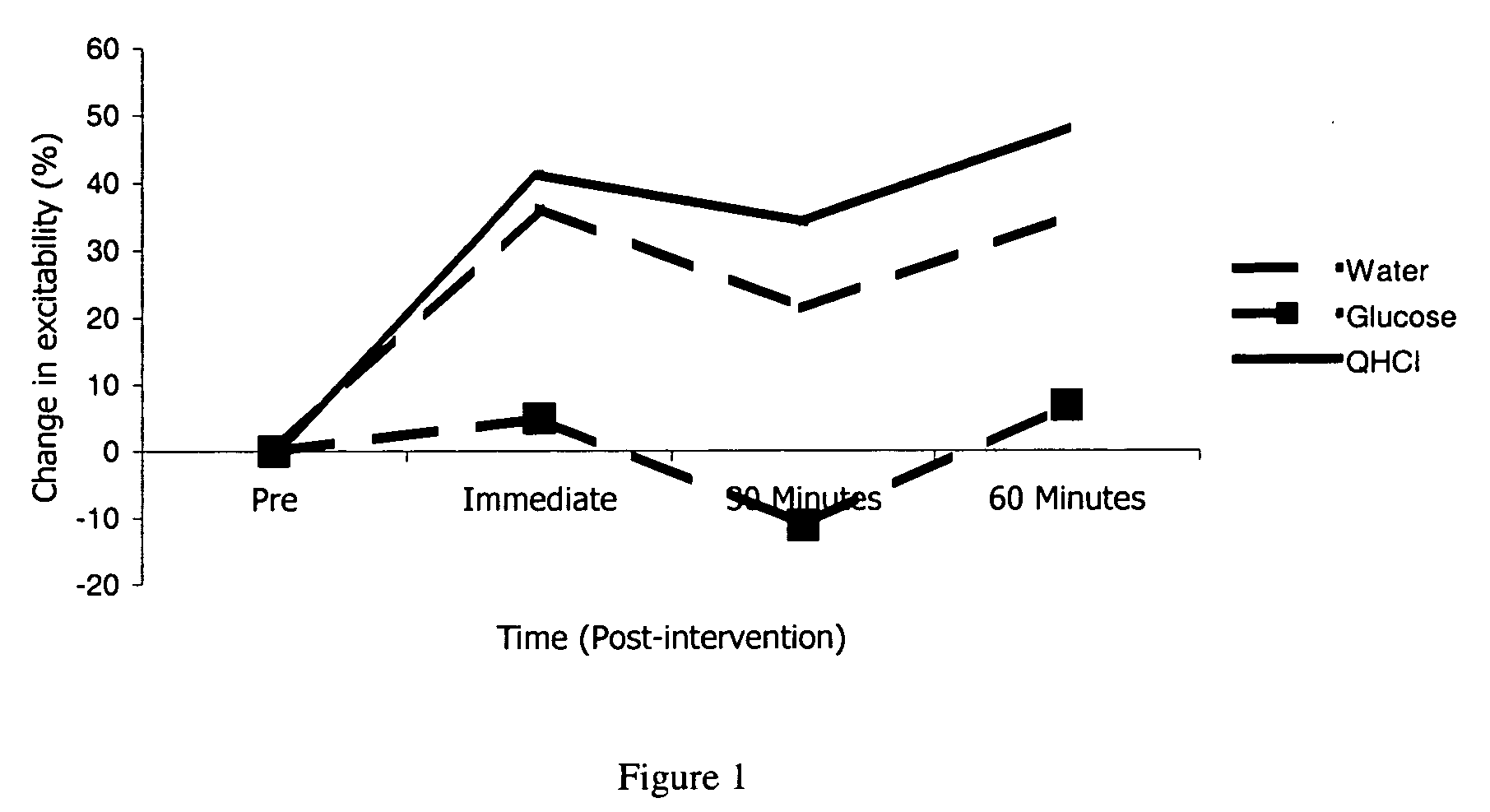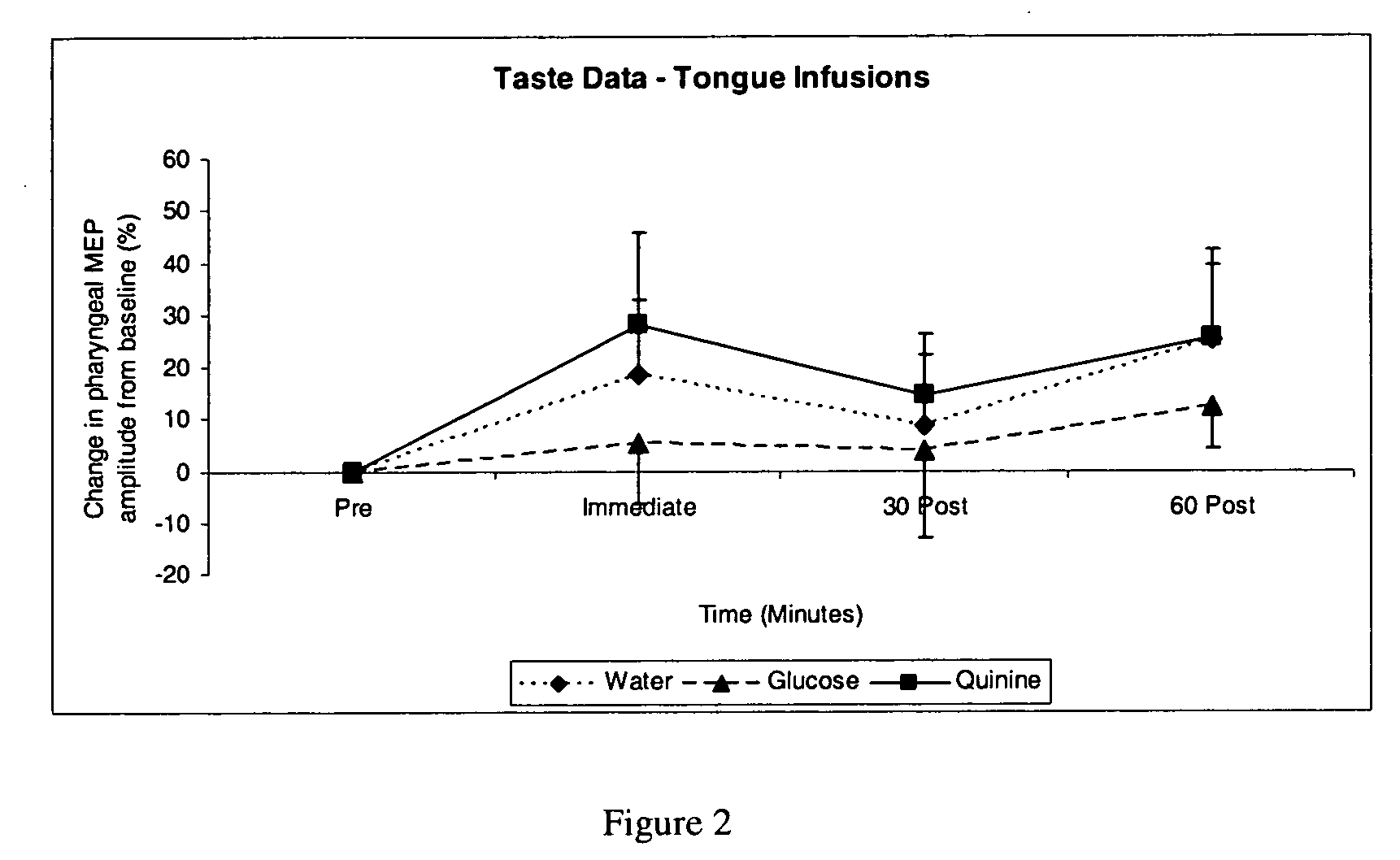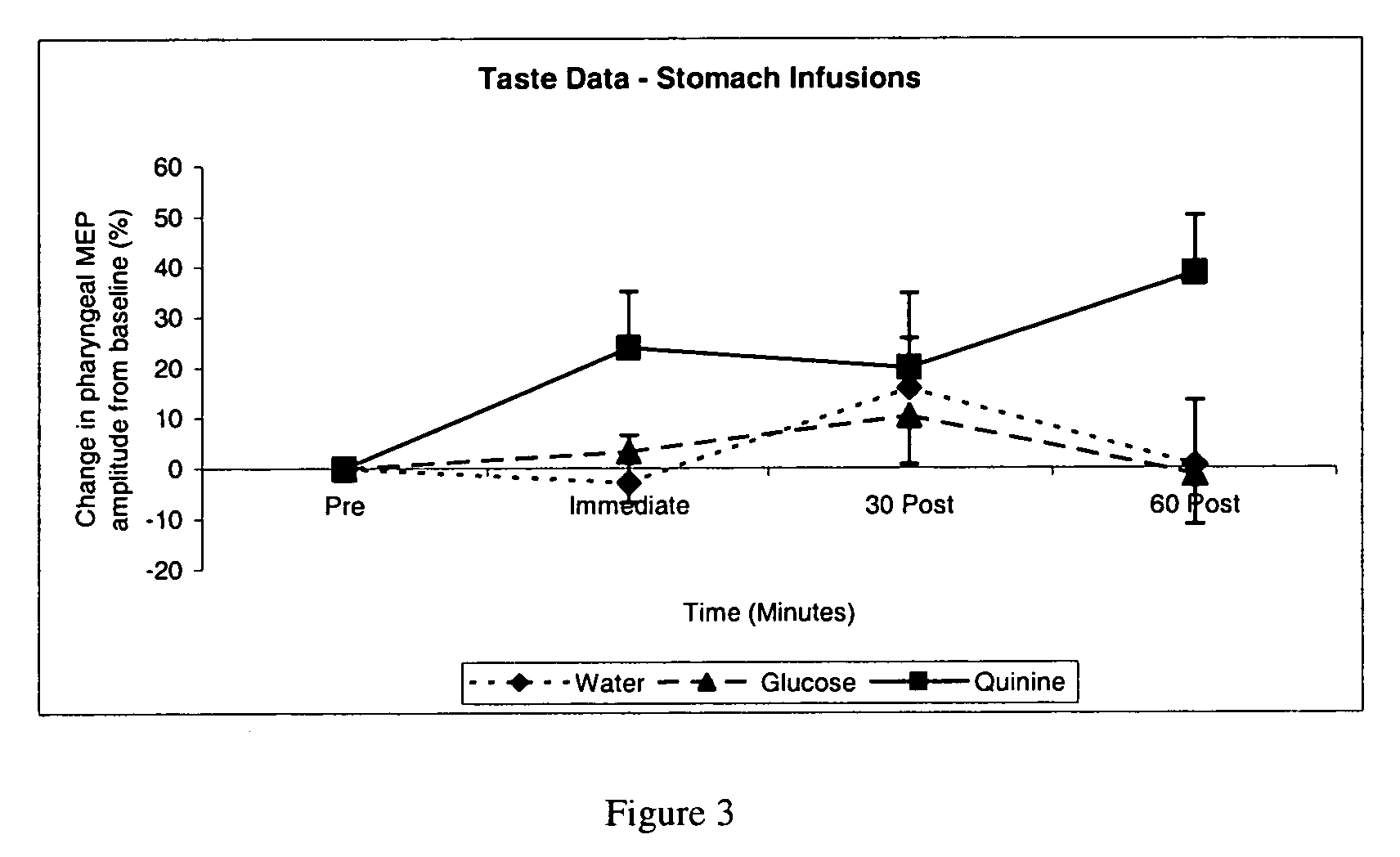Treatment of reduction of dysphagia
a technology of dysphagia and treatment, applied in the field of prevention of dysphagia, can solve the problems of six-fold increased risk of aspiration pneumonia, devastating dysphagia after stroke, etc., and achieve the effect of reducing dysphagia, treating or reducing dysphagia
- Summary
- Abstract
- Description
- Claims
- Application Information
AI Technical Summary
Benefits of technology
Problems solved by technology
Method used
Image
Examples
example 1
[0075] An assessment was made as to the effects of different taste stimuli on human cortical swallowing pathways. The assessment was made upon 8 healthy adult volunteers (seven of which were male, the minimum age of the volunteers being 29 years).
[0076] Each volunteer performed a ten-minute, liquid swallowing task using three (previously titrated) different taste solutions. The three solutions utilised were sterile water (neutral taste), 10% glucose (sweet / pleasant taste), and 0.5 mM quinine hydrochloride (bitter / aversive taste). Solutions were randomised to separate studies at least 24 hours apart.
[0077] Transcranial magnetic stimulation was performed over the swallowing motor cortex, before and up to one hour after each swallow task in accordance with established protocols. Briefly, Single pulse (monophasic) transcranial stimulation (sTMS) of the cerebral cortex was achieved using a magnetic stimulator (a Magstim 200, manufactured by MAGSTIM Company Limited, Whitland, Wales) con...
example 2
[0082] Confirmation of the suitability of averse tasting substances such as the alkaloid quinine to stimulate the swallowing response and thereby aid treatment or reduction of dysphagia was obtained from a second study measuring swallowing reflexes of volunteers receiving neutral, pleasant or aversive taste stimuli.
[0083] Volunteers receive a ten minute infusion of neutral (water), pleasant (glucose) or aversive (quinine) taste stimuli administered such that they stimulated the taste receptors of the tongue.
[0084] The results (shown in FIG. 2 and Table 1) clearly illustrate that, taken over a 60 minute period calculated from administration of the test taste stimulus, the aversive tasting alkaloid quinine induced a greater increase in the amplitude of MEP (illustrative of a greater increase in stimulation of the swallowing response) than did neutral tasting water or pleasant tasting glucose.
[0085] These results confirm the utility of aversive tasting agents such as the alkaloid qu...
example 3
[0086] The ability of substances such as the averse tasting alkaloid quinine to stimulate the swallowing response when administered into the portion of the upper digestive tract below the mouth was in a third study measuring swallowing reflexes of volunteers receiving neutral, pleasant or aversive taste stimuli.
[0087] Volunteers receive a ten minute infusion of neutral (water), pleasant (glucose) or aversive (quinine) taste stimuli administered directly into the volunteer's stomach.
[0088] The results (shown in FIG. 3 and Table 2) clearly illustrate that the pro-swallowing effects of the aversive tasting alkaloid quinine are surprisingly increased (as compared to the effects of neutral tasting water or pleasant tasting glucose) when the test compounds are administered directly to the stomach.
[0089] As shown in FIG. 3, the increase in MEP induced by quinine is markedly greater than that attained using either neutral water or pleasant tasting glucose. Table 2 illustrates that quinin...
PUM
| Property | Measurement | Unit |
|---|---|---|
| Fraction | aaaaa | aaaaa |
| Fraction | aaaaa | aaaaa |
| Fraction | aaaaa | aaaaa |
Abstract
Description
Claims
Application Information
 Login to View More
Login to View More - R&D
- Intellectual Property
- Life Sciences
- Materials
- Tech Scout
- Unparalleled Data Quality
- Higher Quality Content
- 60% Fewer Hallucinations
Browse by: Latest US Patents, China's latest patents, Technical Efficacy Thesaurus, Application Domain, Technology Topic, Popular Technical Reports.
© 2025 PatSnap. All rights reserved.Legal|Privacy policy|Modern Slavery Act Transparency Statement|Sitemap|About US| Contact US: help@patsnap.com



